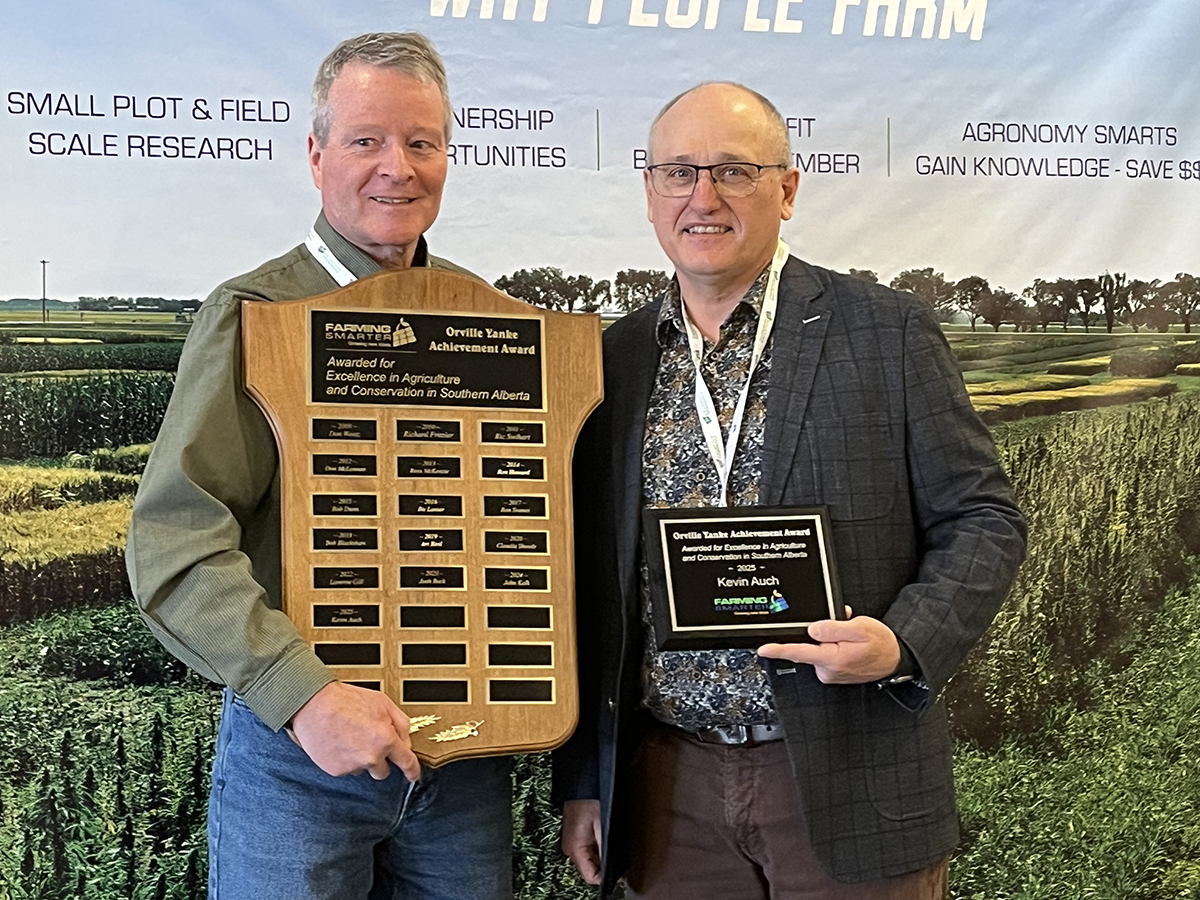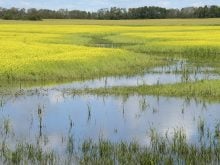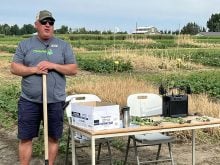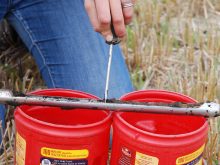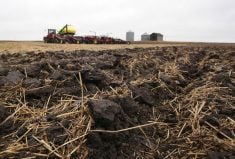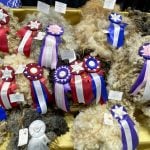Kevin Auch’s dedication to soil conservation in southern Alberta was recognized recently with the Orville Yanke Achievement Award, presented at the Farming Smarter Conference and Trade Show in Lethbridge.
When Yanke, a founder of the Southern Alberta Conservation Association, died in 2007, his wife, Judy, wanted to establish a memorial award that honoured farmers, researchers and specialists who have played a pivotal role in promoting and advancing the cause of soil conservation in the province.
The award was established in 2009.
Read Also

Short rapeseed crop may put China in a bind
Industry thinks China’s rapeseed crop is way smaller than the official government estimate. The country’s canola imports will also be down, so there will be a lot of unmet demand.
Rob Dunn, a Farming Smarter board member, said he first met Auch when the Carmangay farmer was teaching farm management at Lethbridge College. Dunn saw the challenges Kevin and his father, Don, were facing with wind erosion and salinity.
“They were really setting some examples in the community and were always willing to share (information),” said Dunn.
In 2023, Auch hosted a tour of his farmland for senator Rob Black and his colleagues as part of their efforts to develop a soil conservation strategy for Canada.
“Kevin can often be seen in Ottawa promoting the interests of agriculture,” said Dunn, adding Auch has been involved with the Western Grains Research Foundation and has served on a number of boards in the region advancing proactive farm practices.
Auch recalled in his slide presentation how passionate Yanke was in getting the word out about soil conservation. Turning Carmangay sand into productive farming soil soil was the family’s goal since Auch’a father bought the land in 1963.
“Some of the places on the land were pretty eroded,” Auch said.
“They didn’t have the growth protection products that we have now. Wind erosion was a huge problem.”
Auch said he used many of the methods he learned from groups such as the Southern Alberta Conservation Association.
What started off as sandy, beach-like terrain turned into rich structured land with plenty of organic material, and some earthworms for good measure.
Auch’s land is now bountiful with plenty of moisture and nutrient-holding capacity. A student of the land, Auch soaked in as as much information as his land did moisture, taking in conference after conference, both sharing and absorbing information from other farmers.
“Crop rotation is huge for a lot of different reasons,” he said while talking about a crop rotation that is currently in its second cycle, compared to his previous four-year rotation.
Pulse is followed by oilseed, cereal, alternative oil seed (flax/chickpea intercrop) and then cereal again.
“Before it was two cereals stacked on each other. I didn’t like that, I wanted to spread it out. I wanted to get something between those two cereals. I wasn’t seeing problems with it. But saw fly, the second year, you’re putting that host in two years in a row, so I put that flax in there,” said Auch.
“In that rotation, I haven’t had to spray much. My fields are pretty clean, too, but I haven’t seen the disease and insect pressure that we saw before, and I know they are around.”
Auch showed another rotation of yellow beans, canola, durum wheat, flax and spring wheat.
“When you are changing your crops, you are changing your host in this disease/pest triangle. Your pests can be diseases, insects or fungus or whatever. When you are changing your crops in there, you are also removing the food source for pests as well,” said Auch.
It’s important to feed the beneficials in between, he added, making sure not to carpet bomb them when they take care of the bad insects.
“A good rotation is certainly helping.”
The beneficial parastoids that kill off the pesky sawfly are found high in the tall cereal stubble during their reproductive cycle, Auch said.
“When we have these droughts, very often we have dry soil on top. I’m preaching to the converted here. You are seeing that thatch starting to build up on top. I’ve never seeded in the last 10 years any deeper than an inch and a quarter. That’s for peas,” said Auch.
”If I can get under that little bit of thatch layer, there’s always moisture there. Even in 2023, when it didn’t rain until June on our farm, I had a good standing canola come up.”
He said a longer rotation also makes it easier to rotate pesticides.
“I always want to throw in some other type of chemistry. I don’t want to breed that resistance any faster than I have to. I know it is coming at some point, but I don’t want to do it any faster than what is necessary,” said Auch.
“I’m using the low-disturbance seeding with the Pillar (drill). I’m not going to say how I’m doing it is the only way to do it. I probably thought that way 30 years ago, and I was wrong. Thirty years from now, who know what we’ll be doing. The big thing is, don’t be afraid to experiment, but don’t bet the farm on it.
“When I started farming, we weren’t exactly wealthy, so I couldn’t afford to buy all the fancy stuff and be on the leading edge of technology. But I slowly incorporated listening to guys like Orville Yanke and learned how to do stuff.”
Auch likes his stripper header for harvest, but that prevents him from thinner crops such as lentils. He said his stripper works well with thick crops.
“If you get a thin crop, my losses go up on that and I don’t want to buy another stripper, so I don’t buy lentils. I may try a few acres, but my experience has been, your losses go up with your thin crops and a stripper header.”

